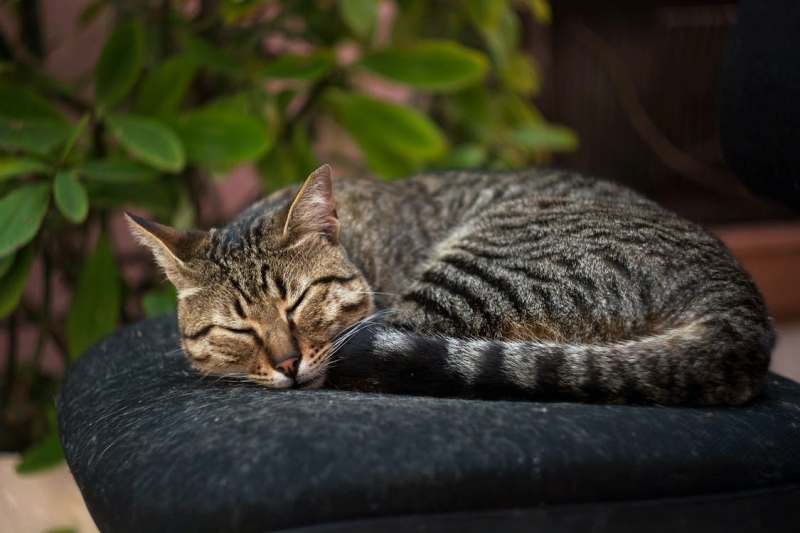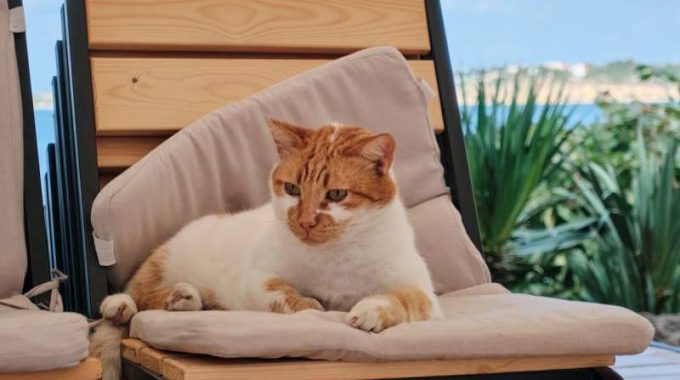Why Choose a Cushion for Your Cat?
There is so much individuality in the domestic cat that our choice of bedding may not match that strong personality. Nevertheless, the accessory market offers something for most cats’ needs.
Indeed, all cats love comfort and especially warmth. They have their favorite resting places, and some of these places can be made more comfortable by adding soft cushions. By observing your cat’s habits, you’ll know where to place them.
Why choose a cushion for your cat?
The domestic cat is a nesting species; its young are born in a nest where they are protected, hence their attraction to curl up in soft and deep cushions, which relax them, and even reassure them. The reflex of burying the head and nose in a warm object present at birth can be reactivated by deep cushions.
The cushion and the associated baskets (house and fabric dome) are nomadic bedding. You can move them and follow the resting habits of the cat, which may change with the seasons, new arrivals in the household (dog, cat, baby, older adult), or extension to the house, moving, which is not always possible with hammocks or bulky beds.
Note: a cat cushion is compact and foldable so you can take it with you on vacation.
Cat cushion: what is the price/quality ratio?

The cushion on which the cat lies is a padded cover. If you are considering making an expensive purchase, check the details of the list below in a pet shop rather than choosing a model from a catalog. The elements that make the quality of the cushion are:
The quality and thickness of the padding: all manufacturers use synthetic padding fibers. The thickness of the cushion is a misleading measure, so it is necessary to examine the grammage, which corresponds to the weight of the stuffing expressed in grams/m²:
the higher it is, the greater the softness;
as it is rarely indicated, unlike the thickness given in the description, it is the weight of the cushion that is significant, the lighter and thicker the cushion, the more it will tend to settle, especially if the cat is heavy;
if you have a large feline at home, choose a thick and heavy cushion.
Seams: the quilted patterns should prevent the migration of the stuffing so that the stuffing does not form a ball in the center of the basket when washed:
The more cross seams there are, the less the cushion will distort. The sewing thread should be strong, preferably nylon.
The finishing touches are important to ensure that the cushion will hold up well to frequent washings: the overcasting or sheathing must be properly executed.
The nature of the fabrics: cats prefer natural materials, especially wool, and technological fabrics that ensure thermoregulation and are breathable.
Good to know: some synthetic fibers (especially breathable fabrics) do not tolerate fabric softeners because they prevent moisture evacuation. Fleece and wool should be avoided. For cotton covers, replace the softener with white vinegar, which sanitizes the fabric.
For quality cushions, budget between $40 and $60.
Recently, the pet accessory market has been offering cushions that can be compared to cushions, as they have the same technical characteristics and require the same know-how: they are houses or domes made of fabrics.
Cat cushion or dome?
The choice will depend on the cat’s temperament and the atmosphere at home.
Dome or cushion for a shy or fearful cat?
The undomesticated feline and hare (stray) cats do not sleep deeply in exposed places, they have dens and dark hiding places. Their territory must provide this kind of protective place.
The smaller and tighter the area, the more control, and comfort the cat will have. It will choose a confined, dark, draft-free, cold, and damp area if it can.
Some cats are fearful by nature. For these cats:
– Choose a closed basket, such as a house, dome, or cocoon.
– Choose a thermoregulating material because heat relaxes the animal.
– Choose a small opening.
Please place it in the places where it likes to take refuge. If it already has very confined hiding places, you can also opt for a mattress or polar cushion to place inside.
If the cat hides under furniture and the bed, don’t try to dislodge it. Offer it a cushion that it may ignore and wait until it feels at home before choosing a bed.
Note: if your cat is a newcomer and has not yet developed habits, place the house above a closet or even inside a cupboard, and do not disturb it. Avoid noisy and busy places.
Outgoing and confident cat
Outgoing and confident, slightly childlike, your cat will sleep anywhere and in any position! Sociable, it is likely that it already squats in your bed, your lap, and your couch.
It’s obviously more difficult to choose a bed for him since he already has what he wants. What he won’t like is the distance. Choose a cushion according to his size, weight, and habits. You’ll find them around $14 to $30.
A cat with a strong character will prefer a place to hide when he wants to be quiet: for him, closed baskets are a better choice.
Cats confined to apartments with minimalist interiors and few furnishings will appreciate a few extra hiding places, so opt for a dome or cocoon:
If you don’t have much soft surface, choose a rectangular or oval cushion, not too small but very soft.
Mats or mattresses may be a better choice for an older pet. On the other hand, if you have a kitten or a young cat, a cushion with large edges will make a cozy nest.
Finally, a house or dome will be more welcoming in unheated houses or apartments. The price for a cat house or dome ranges from $15 to $50.

